Dorothy Perkins, a staple in British women’s fashion, has a rich history that stretches back over a century. Founded in 1909 under the name H. P. Newman, the company adopted the now-iconic name Dorothy Perkins in 1919. Initially renowned for its affordable lingerie, tights, and sleepwear collections, Dorothy Perkins quickly became a household name. By offering stylish yet affordable clothing, it carved out a unique niche in the competitive fashion industry. During the 1960s, under the guidance of the Farmer family, Dorothy Perkins flourished. Alan Farmer, a key figure in the company, was known for his hands-on approach and dedication to maintaining the brand’s reputation for value and quality.
The late 1960s marked a significant era for Dorothy Perkins as it co-funded the expansion of Biba, a trendy boutique that became an icon of Swinging London. Owning a 70% stake in Biba allowed Dorothy Perkins to diversify its offerings and reach new audiences. In 1979, the brand was acquired by the Burton Group, which later became Arcadia Group. This acquisition brought about further growth and innovation, with Dorothy Perkins expanding its range to include a variety of fashionable women’s clothing. Throughout the 1980s and 1990s, the brand continued to evolve, often featuring high-profile campaigns with celebrities such as Helena Christensen and Yasmin Le Bon.
In recent years, Dorothy Perkins faced significant challenges, particularly with the collapse of the Arcadia Group in 2020 due to financial difficulties exacerbated by the COVID-19 pandemic. Despite these setbacks, the brand found new life in 2021 when it was acquired by Boohoo.com. This acquisition allowed Dorothy Perkins to continue its legacy as an online fashion retailer, adapting to the changing landscape of retail while maintaining its commitment to providing stylish, affordable clothing for women. Today, Dorothy Perkins remains a beloved name in British fashion, known for its enduring style and rich history.
Iconic 70s Dorothy Perkins TV Commercial
How to tell if Dorothy Perkins is vintage from the logo
Dorothy Perkins, a well-known British women’s fashion brand, has undergone several logo changes over the decades. Identifying the era of a Dorothy Perkins item can often be done by examining its logo. Below, we detail the evolution of the Dorothy Perkins logo to help you determine if your item is vintage.
1980 to 1991 Dorothy Perkins logo
- This logo features a bold, uppercase font for “DOROTHY” and a smaller, uppercase “PERKINS” underneath.
- The overall design is quite simplistic with a monochrome color scheme.
- This era’s logo is characterized by its solid, no-frills appearance, reflecting the straightforward fashion trends of the time.
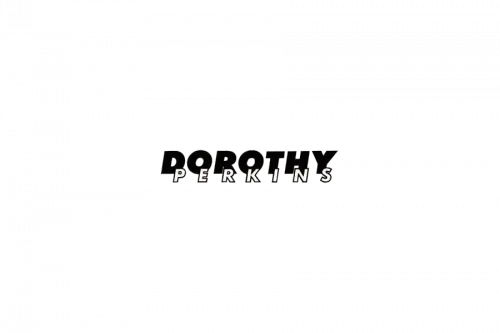
1980 to 1991 Dorothy Perkins logo
1991 to 2006 Dorothy Perkins logo
- In this period, the logo retained its uppercase letters but switched to a more streamlined, modern font.
- The design became slightly more refined with better spacing between letters, giving it a more contemporary feel.
- The monochrome theme continued, maintaining the brand’s classic and clean aesthetic.

1991 to 2006 Dorothy Perkins logo
2006 to now Dorothy Perkins logo
- The current logo of Dorothy Perkins features a thinner, more elegant font compared to its predecessors.
- The font remains uppercase but with more spacing between letters, emphasizing a sleek and modern design.
- This logo is designed to appeal to a contemporary audience, aligning with current fashion trends and branding strategies.
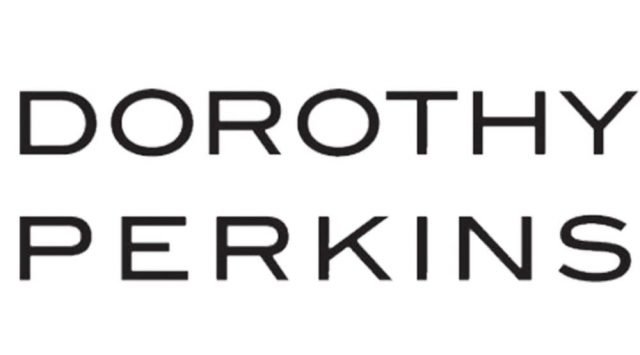
2006 to now Dorothy Perkins logo
How to tell if Dorothy Perkins is vintage from the tags
The evolution of Dorothy Perkins tags over the decades showcases the brand’s journey through various fashion trends and design philosophies. From the classic serif fonts of the 1980s to the more modern and minimalist approaches of the 2010s, each tag reflects a specific era in the brand’s history. Here’s a detailed look at how to identify vintage Dorothy Perkins pieces through their tags.
Need help with vintage tags or labels? Submit a picture on our vintage tag identification page, and we’ll take care of it!
1980s vintage Dorothy Perkins tags
- Bold serif lettering with a classic look.
- Tags often included size indicators such as “EURO 36 UK 10 E 40”.
- Some tags featured decorative patterns or illustrations.
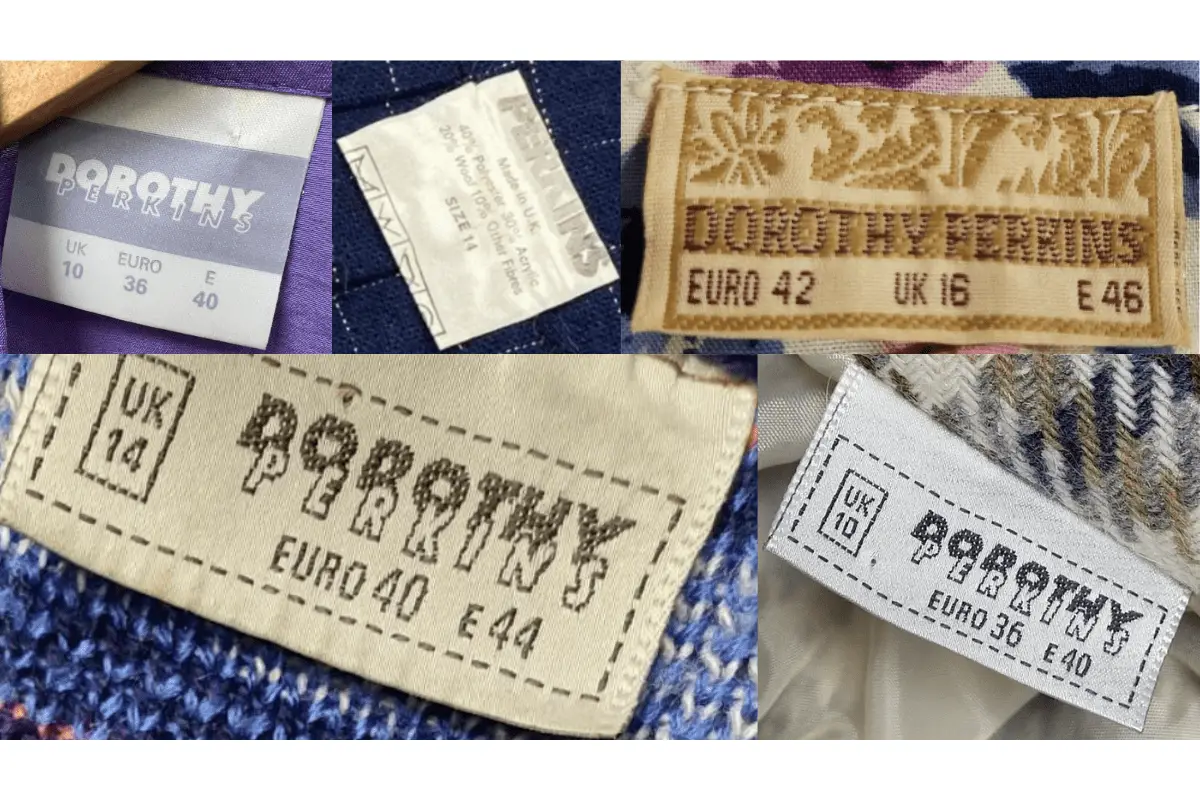
1980s Dorothy Perkins tags
1990s vintage Dorothy Perkins tags
- Maintained the serif font but with a more refined design.
- Often featured a combination of UK and Euro sizing, e.g., “EURO 38 UK 12 E 42”.
- Tags were usually rectangular and sometimes accompanied by additional smaller tags.
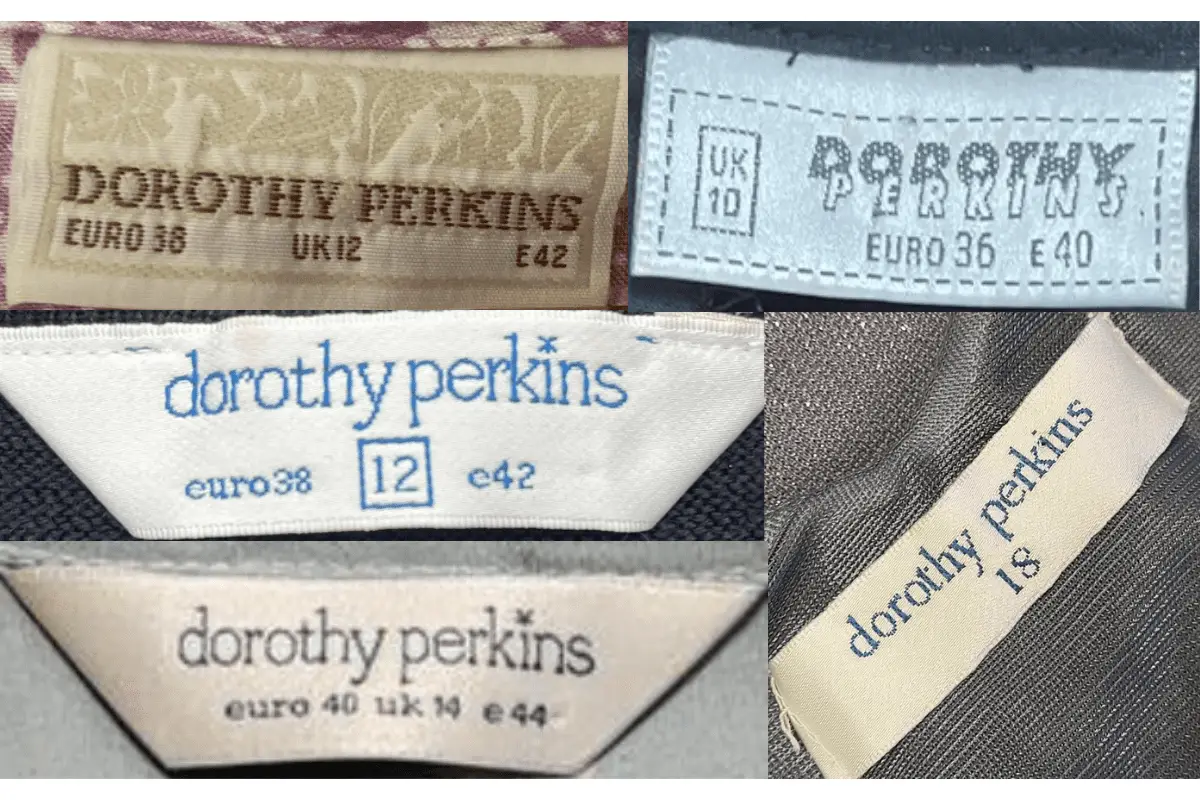
1990s Dorothy Perkins tags
2000s vintage Dorothy Perkins tags
- Introduction of loop tags with a more modern appearance.
- Continued use of bold serif lettering, often with size information on a separate tag.
- Tags began to include the brand’s website “dorothyperkins.com”.
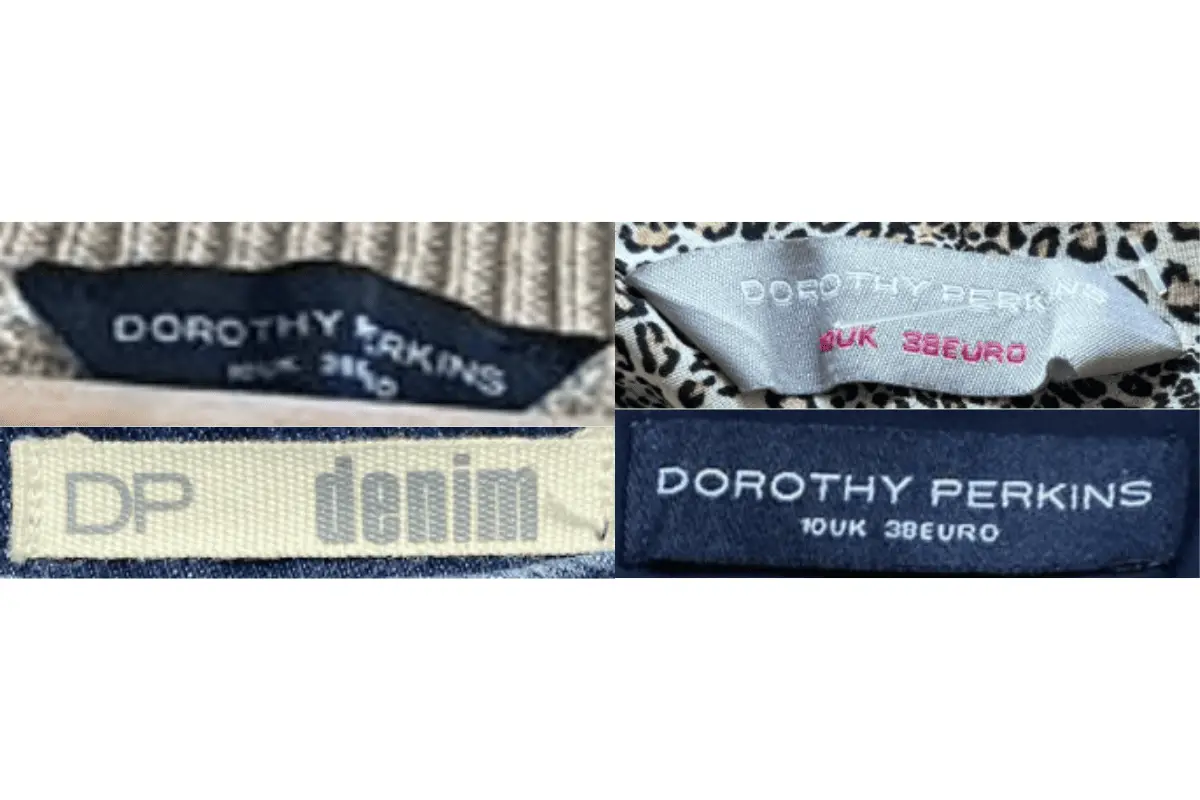
2000s Dorothy Perkins tags
2010s vintage Dorothy Perkins tags
- More minimalist and modern layouts.
- Tags included the “DP” abbreviation, reflecting a streamlined brand identity.
- Variety of colors and materials used for tags, indicating a diverse range of collections.
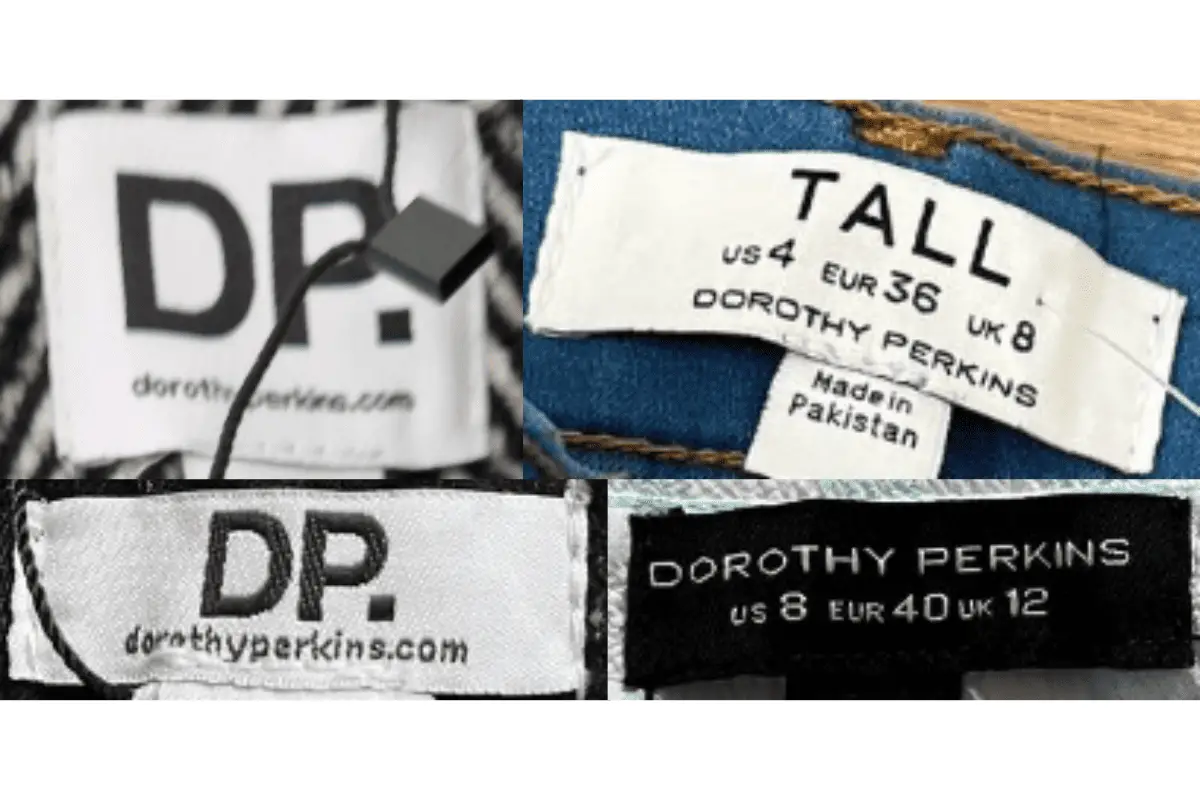
2010s Dorothy Perkins tags
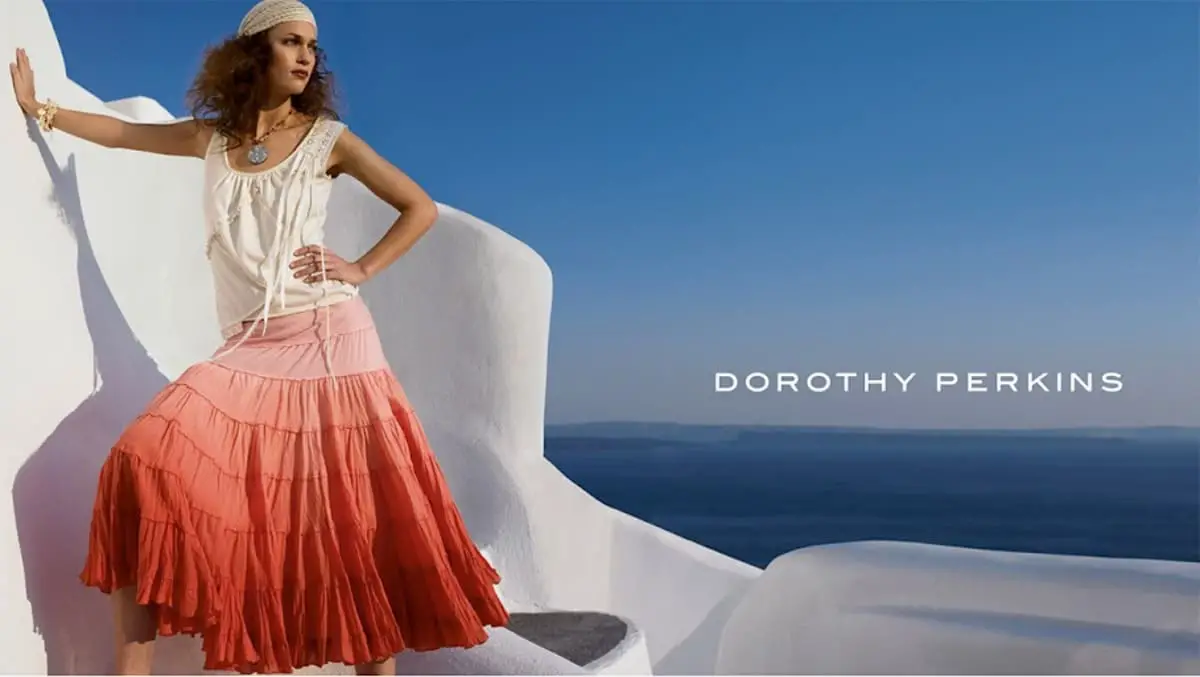




I am sure this piece of writing has touched all the internet users, its really really good piece
of writing on building up new weblog.